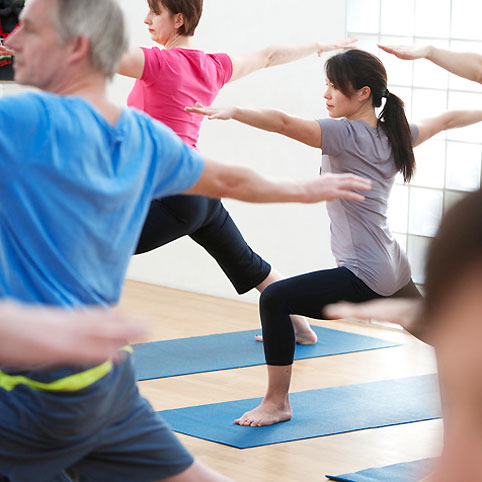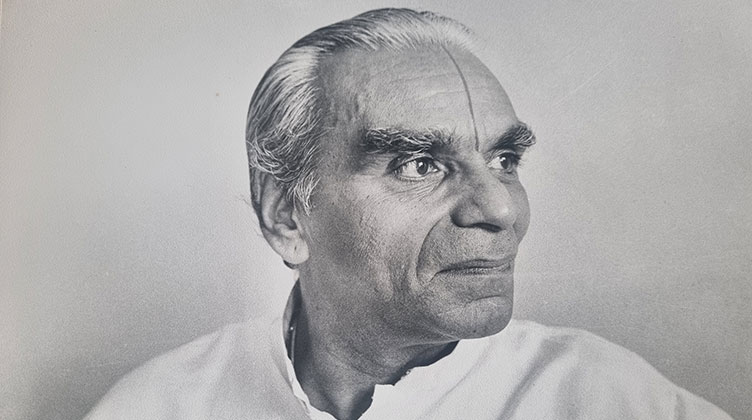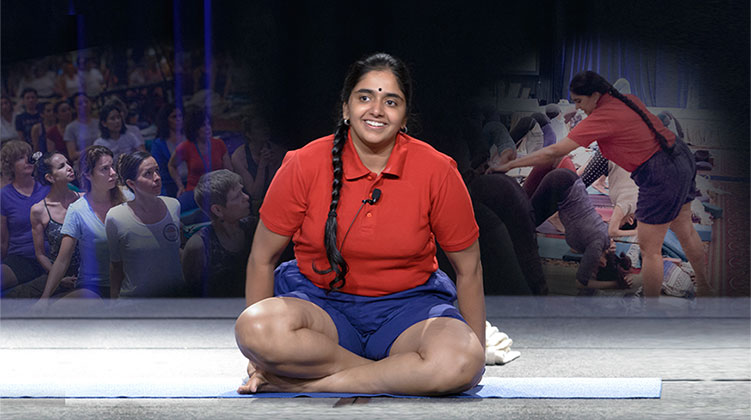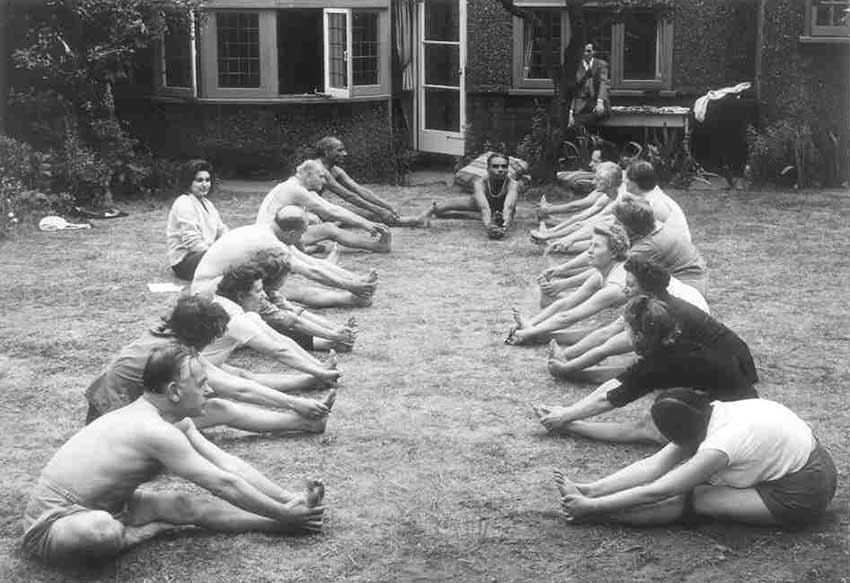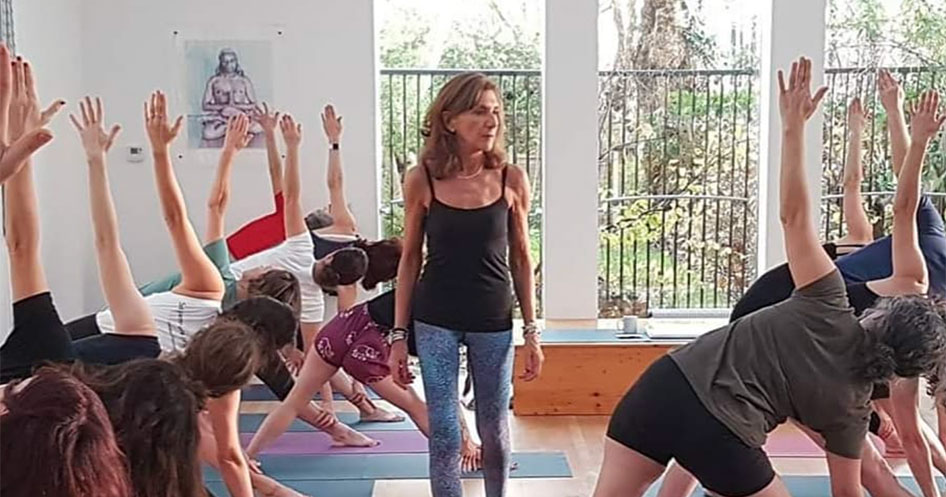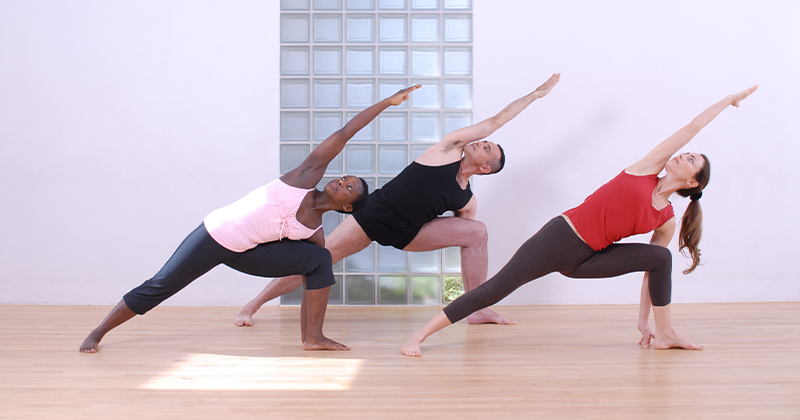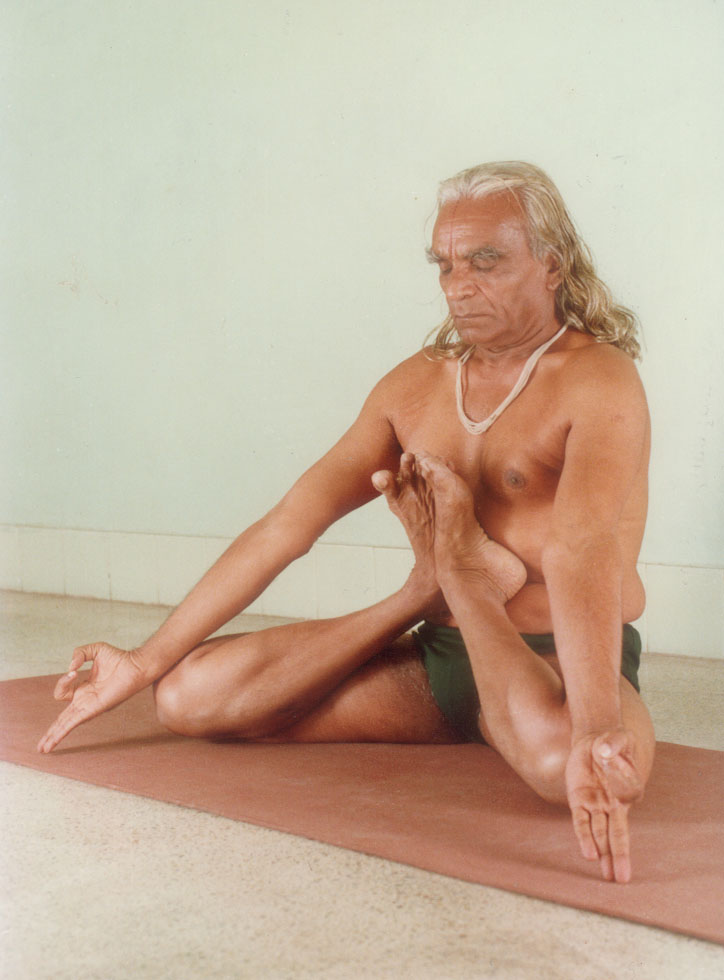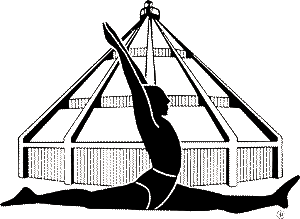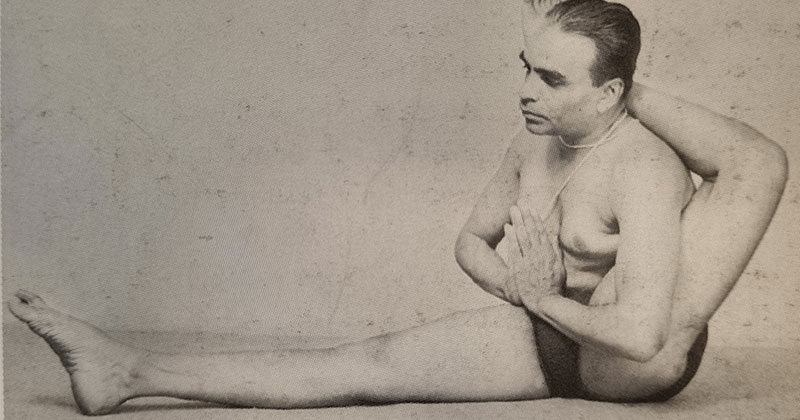
Why practise difficult asanas?
Light on Yoga can be considered as one of the classical texts on yoga in the modern era, having inspired and continuing to enthuse millions. But there is a group of readers who get nervous and overwhelmed by seeing the advanced asanas like the Eka Pada Sirsasana cycles and balancing asanas. The sceptical mind questions whether we need to practise these advanced asanas to enable a higher level of consciousness. Geeta lyengar answered this question during the New Zealand lyengar Yoga Convention in 2003. A transcript of her answer is reproduced here.
In fact, this doubt should not arise in the mind of a real practitioner. When you are doing different asanas, or varieties of an asana, they are shaping, moulding and transforming your consciousness to take you to a higher level. In fact, we have to see how we deal with the different levels of consciousness while practising these asanas instead of asking, “do we need to do all these asanas?” There is a hidden laziness in the mind of the questioner. These asanas are not meant for the body but for the consciousness to penetrate within.
Therefore the question is not which asanas you have to do. The question is how are you going to deal with your consciousness? How do you culture your consciousness, so that it can reach the different levels? You may say that your consciousness is ripe and that is why it is not necessary to do all these asanas. Question yourself; if your consciousness has ripened then are you free from the afflictions? The fear complex is deeply rooted which is called abhinivesa. You may not do these asanas because you may think that your consciousness is evolved, but if tomorrow you are declared as a cancer patient then why does your morale go down? Why do you get shattered? The fear of disease, the fear of death is deeply rooted.
For example, Sudden Acute Respiratory Syndrome is making everyone nervous. The fear doesn’t leave you. So where is the higher level of consciousness? Similarly, the attachment to family, friends, money, name, fame is so strong that you realise it only when you lose it. The mind doesn’t suddenly give up all those attachments straight away. Basically, the practice of asanas is meant to get rid of physical and mental diseases, weaknesses, inertia, fidgeting, fickleness and capriciousness.
Penetrating the consciousness
The problem is that when you are doing the complicated, difficult and advanced asanas, you may do them physically, moulding yourself to find out whether you can perform these asanas, but your consciousness may not show any change at all. You are supposed to penetrate your consciousness, expand the span of consciousness, while practising these asanas. The more the consciousness opens, the less, you begin to understand, you know about your consciousness, citta. These asanas are a kind of challenge for the small mind which seeks only comforts and nothing else. The body is the first enemy, which seeks only the comforts. Asanas teach you tolerance and forbearance. The practice of these asanas is the process for you to take your mind inside. It is very hard to understand because you think that asanas are done just to maintain health by the outer body.
”You need to practise if you need to reach the inner consciousness and you need to know these advanced asanas to reach the inner consciousness.”
Patanjali says that your yoga practice is built up on two wheels: abhyasa and vairagya. Abhyasa means a repetitive practice and vairagya means desirelessness. With the practice of asanas you need to develop a dispassionate and desireless mind. Patanjali mentions this in two aphorisms. If the asanas have to be sthira (firm) and sukha (comfortable) then the abhyasa, or the practice, is essential. The effects of asanas apart from their benefits have to culminate in cessation of dualities. That is vairagya. If this has to be achieved then which is the way? You may stop practising difficult and complicated asanas, but your desires are not going to end. In fact, the varieties of the asanas are meant for this purpose, because normally you project yourself as if you are a dispassionate and a desireless person. But it is not true. You do not know when you will get caught in this enchanting world. You need to practise if you need to reach the inner consciousness and you need to know these advanced asanas to reach the inner consciousness.
Difficult and easy are relative terms
First of all, the words “difficult” and “easy” are relative words. Trikonasana will be a difficult asana for a beginner and easier for the advanced ones. The other day I took Trikonasana four or five times for you to understand. It took a long time for you to penetrate within yourself. It took a long time for you to look, penetrate, feel and be with your own body, with your own mind. Why did it take such a long time? Because, this simple asana became complicated.
The complicated asanas in this sense make you go further with that depth. Trikonasana itself was complicated to you when you had not done it that way, when you have not done mindfully. The question is not about difficult or simple asanas. Suppose, if the asana is simple, such as Virasana then you may just sit in Virasana, but are you penetrating in that Virasana? If you just sit in Virasana what is the point? Your mind may begin to wander. You should be able to go inward, and penetrate in that Virasana. Then tomorrow somebody can say why not sit on the chair. Why only sit in Virasana or Padmasana? This is how the arguments set in.
Yes, you can sit on the chair and have self-realisation! But where does it lead? The more the comforts, such as a cushioned chair, you are happy and comfortable, but the mind does not remain under control. It is neither freed from affliction nor from disturbance. That’s why tapas is essential.
Tapas to Isvara pranidhana
Tapas is the first step for a beginner. The second chapter, Sadhana Pada, of Patanjali’s Yoga Sutra is meant for beginners. Tapas means penance. Therefore, whatever endeavour has been undertaken has to be continued irrespective of what may happen, irrespective of the circumstances. One has to continue without leaving or giving up the efforts. This is called tapas. Impurities get burnt with tapas. So the practice of complicated asanas is nothing but tapas. It is the process of burning desires in order to achieve the purity of mind. Tapas leads one towards svadhyaya and svadhyaya towards Isvara pranidhana.
Even today (touch wood!) Guruji does difficult asanas at his age. It surprises anyone, perhaps everyone. Somebody can simply ask why does he bother to do these asanas. I don’t think that at this age somebody would be able to do topsy-turvy asanas such as Sirsasana and Sarvangasana or the back-bendings with that intensity because the fear complex arises at that stage. Then shakiness comes in. It’s not a young age. He is not merely active, but he does these asanas and finds the depth in each of them. So there is the tapas, svadhyaya, and Isvara pranidhana. That is what he is doing. That is what his faith is, sadhana is. Otherwise one cannot do.
We often say, “Oh! My legs are stiff. My knees are stiff. My back is stiff. It doesn’t bend forward. It doesn’t bend backwards. Something may happen”. It is a hidden fear. The fear complex makes one half-dead. But in his case it is tapas, to continue with whatever has been undertaken. Undoubtedly the impurities such as desires, fear complex, anger, greed and infatuation are burnt, but in the case of Guruji it is the experience of tadä drai!ufp svarüpe avasthänam (Yoga Sutras 1.3). In every asana he is with the core of the being.
You have to practise not only the simple but difficult asanas also. At least let the tapas begin. You need to do everything, but I won’t say jump to do the difficult asanas. You have to build yourself up slowly and properly. Why? Because, we are not super humans! We are afraid of even small injuries. We want to run away from pains. You need tremendous courage to do the advanced asanas, face those injuries and come out from that injury.
Guruji, the sadhaka and the teacher
Guruji is not only a sadhaka, but a real teacher in that sense. He faced the injuries, went through all the difficulties and problems. Then he showed the way how he can teach others without causing any injuries so they do not suffer the way he suffered. This is how props came into the picture. Different ways of adjusting the blankets came into the picture. All this is to safeguard you.
But still as an aspirant, as a sadhaka, we need t o see where and how we can cross the border of fear and go a little ahead. We have to definitely aim at it. We cannot be protecting ourselves all the time in this manner. Protecting fear is not tapas. Is this clear? When I give the example of Guruji and his practice, you will know what tapas is.
He said some time ago that he was practising like a mad man. But in that madness of practice he found different ways to do, how to feel and how to protect. This is what you need to see.
You can penetrate the inner sheaths of the body, from the skin to the soul, only with intense and courageous practice.
You need to practise. You have to see that you have open eyes, an open mind, and a courageous approach to look into it. You can penetrate the inner sheaths of the body, from skin to soul only with intense and courageous practice. That will make it clear to you why these intricate asanas are required. So you need to do tapas to cleanse yourself. Is it clear to you? One of the Upanishads says that one has to remove all the impediments in the body so that the soul, king of the body, can travel freely in his regime, the gross, subtle and causal body.
This article is taken from Dipika, The Iyengar Yoga London Maida Vale Journal, Issue No. 39, May 2007. It first appeared in Yoiga Rahasya Vol. 13, No.2 2006.
Blog categories
Become a member
Join our community to get reduced class prices, early booking for events and workshops plus access to the studio for self practice.
Recent news and articles
2024 Convention – Group Livestream Event
7 March 2024|
The First Public Iyengar Yoga Class in the UK
22 November 2023|
NEW Hybrid Classes
5 September 2023|
7 Day Visitor’s Pass
26 June 2023|
Geeta Iyengar on Why We Practise Difficult Asanas
26 June 2023|
